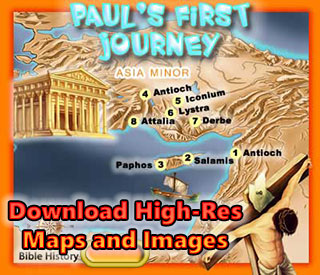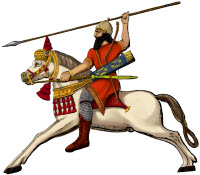|

|
|
|
|
The Holy Land in the Bible: Israel and Palestine Through the Ages
The land of Israel and Palestine is often called the "Holy Land" because it is deeply connected to the religious traditions of Judaism, Christianity, and Islam. These lands have been home to many of the Bible’s most famous stories and figures, from Moses and David to Jesus and Muhammad. But beyond the Bible, the region has witnessed thousands of years of history, filled with empires, conflicts, and important cultural and religious events. In this article, we will take a journey through time to explore Israel and Palestine’s biblical past, its history through the ages, and how it remains significant today.
The Bible and the Beginning of the Holy Land
The story of Israel and Palestine in the Bible begins with a promise. In the Old Testament, God promises the land of Canaan to Abraham, the patriarch of the Israelites. According to the Bible, Abraham’s descendants, the Israelites, were destined to inherit this land.
-
Abraham is a key figure in the Bible, and his journey to the Holy Land marks the beginning of the Israelites' connection to the land of Canaan. His story is found in the book of Genesis, where God calls him to leave his home and travel to a new land, promising him that his descendants would become a great nation.
-
Isaac and Jacob, Abraham's son and grandson, continued this journey. Jacob, later known as Israel, had twelve sons, whose families became the twelve tribes of Israel.
-
In the book of Exodus, the Israelites, led by Moses, escape slavery in Egypt and wander in the desert for forty years. This story is one of the most important in the Jewish faith. After this long journey, they eventually enter the Promised Land of Canaan, which is modern-day Israel and Palestine.
Israel’s Early Kingdoms: Kings, Temples, and Jerusalem
After the Israelites settled in Canaan, they established themselves as a people with their own land. Their early history is marked by the rise of powerful kings and the establishment of Jerusalem as a central city.
-
King Saul was the first king of Israel, but it was his successor, King David, who truly established the kingdom. According to the Bible, David defeated the giant Goliath and became a legendary king. He made Jerusalem the capital city of Israel, marking it as a spiritual and political center.
-
King Solomon, David's son, is best known for building the First Temple in Jerusalem, which became the central place of worship for the Israelites. Solomon’s reign was a time of peace and prosperity, but after his death, the kingdom split into two: the northern kingdom of Israel and the southern kingdom of Judah.
The Exile and Return: The Israelites in Babylon
One of the most significant events in the Bible is the Babylonian Exile. In the 6th century BCE, the Babylonian Empire conquered the kingdom of Judah and destroyed the First Temple in Jerusalem. The Israelites were taken as captives to Babylon.
-
This exile is an important chapter in Jewish history and is described in the books of Jeremiah, Ezekiel, and Daniel. The Israelites' time in Babylon was a period of hardship, but it also led to the strengthening of their religious identity.
-
After about 70 years, the Persian Empire conquered Babylon and allowed the Israelites to return to their homeland. They rebuilt the Second Temple in Jerusalem, marking the return of Jewish worship to the Holy Land.
The Land under Foreign Rule: Empires Come and Go
Over the centuries, Israel and Palestine became a crossroads for many empires. These empires would control the region for long periods of time, often bringing their own cultures, religions, and ways of life.
-
The Greeks: In the 4th century BCE, Alexander the Great and his successors, the Seleucid Empire, controlled the land. During this time, many Greeks settled in the region and influenced its culture. The Maccabean Revolt in the 2nd century BCE was a response to Greek rule, and the Jewish people temporarily gained independence.
-
The Romans: In 63 BCE, the Roman Empire took control of the region, making it part of the Roman province of Judea. The Romans were the rulers during the time of Jesus Christ and the events of the New Testament. The Second Temple was destroyed by the Romans in 70 CE, a traumatic event for the Jewish people.
-
The Byzantines: After the fall of the Roman Empire, the region became part of the Byzantine Empire (the eastern part of the Roman Empire), which was predominantly Christian. During this time, Christianity spread across the region, and many important Christian holy sites were established in the Holy Land.
-
The Muslims and the Crusades: In the 7th century, the Arab Muslims conquered the Holy Land, bringing Islam to the region. The city of Jerusalem became a sacred place for Muslims as well as for Jews and Christians. In the following centuries, Christian Crusaders from Europe fought to reclaim the land for Christianity, resulting in a long series of Crusades.
The Modern Era: From the Ottoman Empire to Today
In the 16th century, the Ottoman Empire took control of the Holy Land, and it remained part of the Ottoman Empire until World War I. After the war, the British took control of the region under a League of Nations mandate, and tensions between Jews and Arabs began to rise.
-
In the 20th century, the rise of Zionism (the movement for a Jewish homeland) and the persecution of Jews in Europe led to increased Jewish immigration to Palestine. This caused friction with the local Arab population, who also had strong ties to the land.
-
In 1947, the United Nations proposed a plan to divide the land into separate Jewish and Arab states. However, when Israel declared its independence in 1948, it led to conflict with the surrounding Arab nations and the displacement of many Palestinians.
-
The conflict between Israel and the Palestinians continues today, with both groups claiming the land as their own and fighting for control of Jerusalem and other holy sites.
Jerusalem: The Heart of the Holy Land
Throughout history, Jerusalem has been the spiritual center of the Holy Land. It is considered sacred by Jews, Christians, and Muslims. For Jews, Jerusalem is home to the Western Wall, the last remnant of the Second Temple. Christians honor the Church of the Holy Sepulchre, where they believe Jesus was crucified and resurrected. Muslims revere the Al-Aqsa Mosque, which is the third holiest site in Islam.
The city has been destroyed, rebuilt, and fought over countless times throughout history. Today, it remains one of the most important and contested cities in the world.
Conclusion: The Enduring Significance of the Holy Land
The history of Israel and Palestine is a story of religious devotion, cultural richness, and political conflict. From the biblical stories of Abraham, Moses, and David, to the struggles of modern times, the Holy Land continues to be a place of deep importance for billions of people around the world.
As we look at the history of Israel and Palestine, we see how religious beliefs, political boundaries, and cultural identities have shaped this region through the ages. Whether through the lens of the Bible or the events of today, the Holy Land remains a symbol of hope, faith, and the desire for peace.
The story of Israel and Palestine is far from over, but by understanding its long history, we can better appreciate the significance of this land to people of all faiths and backgrounds.
Tags: Israel Ancient Israel history Ancient Israel Bible history Bible study Religious Sites Biblical History Christianity Palestine Bible Ancient History Middle East Jerusalem King David Bible Stories Israeli-Palestinian Conflict Israelites Judaism Islam Second Temple Middle East History Holy Land Modern History
Kid's Bible Maps
Bible History Online
The Geography of the Bible
© Bible History Online (https://bible-history.com)
Made by Network Local

Kids Bible Maps
About
Us
Contact Us
To
Parents
To
Teachers
Kids Bible Blog
Using Our Maps
Mission
Statement
Doctrinal
Statement
Instructions
Popular Bible Maps
The Journey of Abraham
Moses and the Exodus
Joshua and the Land
The Kingdom of David
The Kingdom of Solomon
Israel in Jesus' Time
Paul's First Journey
The Land of Israel
The Land of Egypt
The Land of Assyria
The Land of Babylon
The Land of Persia
The Land of Greece
The City of Rome
Noah's Ark and Mt. Ararat
The Tower of Babel
The Old Testament World
The New Testament World
Ancient Empires
Moses and the 10 Plagues
Ancient Peoples
The 10 Commandments
The 12 Tribes of Israel
The Ministry of Jesus
Bible Stories with Maps
Daniel in the Lions Den
David and Goliath
Baby Moses
Jesus and the Little Children
Coloring Book Images
Coloring Book
Donkey
Camel
Lamb
Noah's Ark
Noah's 3 Sons
Abraham
Sheep
Lion